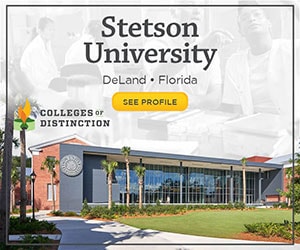First-Year Seminars: The Gateway to Success for College Freshmen
It can be overwhelming to start at a new college as a freshman or transfer student. Many schools now provide seminars and small group experiences—typically capped at twenty students or less per group—for first-year students to help them acclimate to the college setting. In some cases, first-year seminars even provide students with the opportunity to work alongside faculty as they engage in research. First-year experiences range from classwork with faculty that focuses on improving academic achievement, to working close with small clusters of fellow college freshman on service-learning or in learning communities.
First-year seminars provide guidance, socialization, and study groups for incoming college freshmen, helping new students make friends and learn about campus resources. Faculty and staff members who lead these seminars become a resource for first-year students who need mentorship or advice. Many seminars are academically-based and give new students their first taste of college-level critical thinking skills, oral skills, and writing.
Examples of First-Year Seminars
Some of the common types of opportunities available to first-year students include:
- First Year Seminars: Often taught by prominent members of the faculty and focusing on their personal academic interests, these seminars offer students small class sizes and frequently involve an introduction to college-level writing and research.
- First‐Year Interest Groups (FIGs): FIGs create small cohorts of students who meet together in a weekly seminar led by faculty or staff, and may take one or more classes together and/or participate in a residential learning community.
- Residential Learning Communities: Residential learning communities bring students together to share a wing or floor of a residence hall and an academic seminar or shared courses.
- Undergraduate Research Scholars: These programs allow new college students to engage in research, often as a collaborative exercise under the guidance of faculty.
- Learning Communities: Similar to FIGs, learning communities bring students together for a series of thematically-organized, interdisciplinary courses with collaborative or research focus.
- Service Learning: Service learning experiences are course-related opportunities that allow first-year students to participate in ongoing volunteer projects throughout their first college semester.
- Community‐Based Projects: Universities host campus-wide initiatives for first-year students to engage in volunteerism en masse, such as park or waterway cleanup, Habitat for Humanity projects, or similar activities.
What Can Students Expect?
First-year programs often take the form of seminars or other small group experiences. Students enroll for one or more classes in common and then meet separately for interaction as a group. In such seminars, there may be presentations for registration advising, major exploration, campus resources or other activities to help students learn about the campus and improve their academic skills.
Coordinators for the seminars may be faculty, academic advisors, student services staff, upperclassmen, or a combination of all of these. These personnel provide structure and guidance to the seminar, and their direct student engagement early on makes them available as mentors to students throughout their college career.
In addition to instruction, the seminars encourage students to interact with each other outside of the classroom, allowing them to make friends and form study groups. By bringing these students together from the outset, first-year experiences erode the isolation that many students experience when attending a new school.
In some first-year programs, students may participate in collaborative research projects or presentations, allowing them a deeper engagement with academic material while also allowing them to work closely with a faculty member and a team of peers. They may also engage in community-based learning opportunities and service learning.
How do first-year experiences improve student outcomes?
First-year interest groups increase students’ likelihood to seek out campus resources and engage in activities such as study abroad and undergraduate research. Participating in a first-year seminar also increases the likelihood that students will use campus services such as writing centers, advisory offices, or career services.
At public universities, many introductory courses consist of large lecture classes taught by graduate students. In these environments, it can be difficult for students to meet and interact with research faculty. Colleges with great first-year seminars help freshmen build a relationship with a faculty member in their first semester.
Furthermore, first-year students are often considered “high-risk” students. The stress of acclimating to new institutions, including adapting to the rigors of a college education and finding a community, can have a negative impact on first-year students’ grades and overall performance. Participating faculty or academic advisors are more readily able to help first-year students who are struggling and intervene as appropriate.
By building supplemental instruction (study skills, review of course materials, etc.) into the seminar, faculty ensure that students enrolled in first-year seminars have greater academic success than those who are not in a similar program. This outcome can also be a direct result of active and collaborative learning activities and more frequent interactions with faculty.
Students who enroll in first-year programs regularly demonstrate higher retention rates than similar students who did not join a first-year program. Research into first-year experiences shows that student participation in first-year seminars has a positive impact on grades as well as the likelihood a student will continue to their second year. This trend is particularly noteworthy for higher-risk categories of students, (first-generation college students, those with low ACT scores, or students of color).






